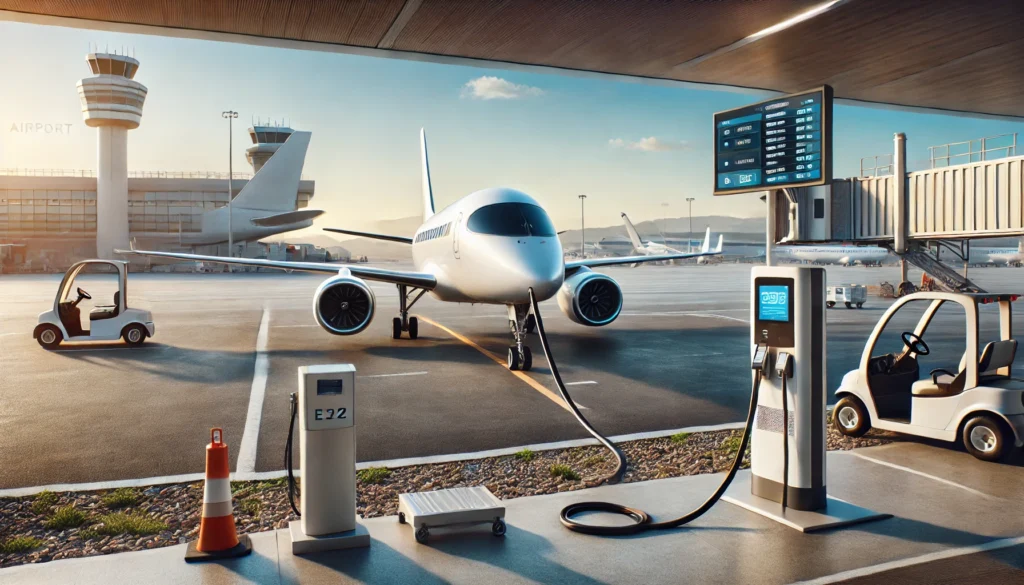Welcome to the future of air travel! Electric aviation is set to revolutionize how we fly, offering a greener and more sustainable way to travel by air. This blog will delve into the fascinating realm of electric aviation, its benefits, challenges, and what it means for India. Let’s dive in and see how electric planes could change the skies!
What is Electric Aviation?
Electric aviation refers to the use of electric-powered aircraft for air travel. These aircraft are driven by electric motors powered by batteries, unlike traditional jet engines that rely on fossil fuels. This shift to electric power is aimed at reducing the carbon footprint of air travel, making it more eco-friendly.
Why is Electric Aviation Important for India?
India, with its burgeoning population and expanding economy, is experiencing a swiftly rising demand for air travel. However, this comes with significant environmental impacts. Electric aviation offers a way to meet this demand while minimizing the negative effects on the environment. Let’s explore why this is particularly relevant for India.
The Benefits of Electric Aviation
Environmental Impact
Electric planes produce zero emissions during flight, significantly reducing the carbon footprint of air travel. This is crucial for combating climate change and reducing air pollution, which is a major issue in many Indian cities.
Cost Efficiency
Electric aircraft are cheaper to operate and maintain compared to traditional planes. The cost savings come from lower fuel expenses and reduced maintenance needs, as electric motors have fewer moving parts than jet engines.
Noise Reduction
Electric planes are quieter than conventional aircraft, reducing noise pollution around airports. This can improve the quality of life for people living near busy airports in cities like Mumbai and Delhi.

Real-Life Examples of Electric Aviation
Eviation Alice
Eviation Aircraft, a company specializing in electric planes, has developed the Eviation Alice, a fully electric aircraft designed for short regional flights. With a range of up to 1,000 kilometers, Alice can connect smaller cities and reduce the environmental impact of short-haul flights.
Pipistrel Alpha Electro
Pipistrel, a Slovenian aircraft manufacturer, produces the Alpha Electro, an electric plane designed for pilot training and short trips. This aircraft is already being used in several countries and demonstrates the potential of electric aviation for training and recreational purposes.
How Electric Aviation Can Transform Air Travel in India
Connecting Remote Areas
Electric planes can help connect remote and underserved areas in India, making air travel more accessible. Small electric aircraft can operate on shorter runways, bringing air connectivity to regions that currently lack it.
Reducing Flight Costs
Lower operational costs of electric planes can lead to more affordable air travel. This can boost tourism and business travel, contributing to economic growth.
Promoting Green Tourism
Electric aviation supports sustainable tourism by reducing the environmental impact of travel. India’s rich cultural and natural heritage can benefit from eco-friendly travel options, attracting environmentally conscious tourists.
Challenges and Solutions
Battery Technology
The main challenge for electric aviation is battery technology. Current batteries have limited energy density, which restricts the range and payload of electric planes. However, ongoing research and development are expected to produce more efficient batteries in the future.
Infrastructure
Adapting existing airport infrastructure to support electric aviation requires investment. This includes setting up charging stations and maintenance facilities for electric planes. Government support and public-private partnerships can help address this challenge.
Regulatory Hurdles
The aviation sector is subject to strict regulations, and new innovations must comply with rigorous safety standards. Cooperation among manufacturers, regulatory bodies, and policymakers is crucial for the secure and prompt adoption of electric aviation.
The Future of Electric Aviation in India
The future looks bright for electric aviation in India. As technology advances and environmental awareness grows, electric planes are poised to become a significant part of the aviation industry. Government initiatives and support from the private sector will be crucial in driving this transformation.
Conclusion
Electric aviation represents the future of green air travel, offering a sustainable solution to the growing demand for air transportation. For India, this innovation can lead to environmental benefits, cost savings, and enhanced connectivity. By embracing electric aviation, we can look forward to a cleaner, quieter, and more efficient way to fly. Let’s support this exciting development and take a step towards a greener future!
Author’s Note:
Thank you for joining me in exploring the future of electric aviation. I hope this blog has sparked your interest in sustainable travel and the exciting possibilities of electric planes. Together, we can make a positive impact on the environment!
G.C., Ecosociosphere contributor.




